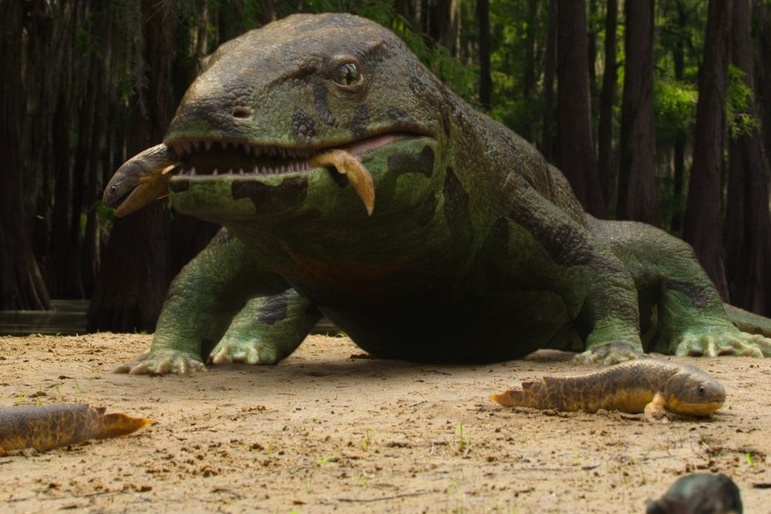(Los Angeles) Life on our planeta new Netflix documentary series produced by Steven Spielberg, aims to retrace the complete history of the presence of life on Earth, in a breathtaking and eye-catching format.
Broadcast worldwide from Wednesday on the platform, the documentary, in eight episodes, offers viewers a dive into the five previous mass extinctions, recreated using special effects.
The narration, carried by actor Morgan Freeman, reminds us that life has always found a way to overcome catastrophes for more than 4 billion years, from harsh ice ages to meteorite falls.
Each time, species that managed to escape destruction waged a fierce fight, in the manner of Games of Thronesto ensure domination of the new era.
“What we wanted to do, our intention from the very beginning, was to adapt the life story into a serial. To make it a production that we want to watch in one sitting. Because this story is so dramatic,” says writer-producer Dan Tapster.
“I think and hope that this is something that we have achieved, which is probably a first in natural history. »
In Life on our planetthe tension and suspense reside in the surprise “victory” of species over others, at least for a few hundred thousand years.
The influence of Spielberg’s studios, Amblin Television, added “much more emotion” and “pathos” to this historic documentary, according to Mr. Tapster.
The documentary features key species, such as the first fish with a backbone or the first vertebrate to migrate from the ocean to the land.
With 99% of the species that lived on Earth now extinct, the directors had the freedom of choice.
“There are about a billion species, at least, that are no longer with us, and we had to narrow it down to 65,” explains the author-producer.
The stories presented are often those of unlikely heroes, of courageous surviving species, like that of the strange-looking Arandaspis fish.
This extinct fish “is a little rotten, it’s weird… but it’s there (in the documentary) because it plays a crucial role” in evolution, explains Jonathan Privett, head of special effects.
” Authentic “
The series is full of special effects designed by the company Industrial Light & Magic, created by the father of Star Wars George Lucas, who was a pioneer 30 years ago in the design of 3D dinosaurs for Jurassic Park by Steven Spielberg.
The monsters of the past, ranging from dinosaurs to Cameroceras, giant molluscs whose shells could reach 8 meters, blend into real landscapes in the series.
To do this, producers had to scour the globe for contemporary natural landscapes resembling those in which these creatures lived more than 450 million years ago.
“Animals evolve in the real world. I think it’s fluid, and I think it’s a very authentic way of transporting us to this distant era,” points out producer Keith Scholey.
The directors also had to use special effects to remove any trace of modernity from the images, erasing fish, mammals and even grass.
“Weed was our nightmare,” remembers Dan Tapster. It “only took hold on earth about 30 million years ago…so that means we had to do a lot of gardening.”
“Dominant species”
But the documentary is far from the only one on the market. Planet Earth IIIa new part of the series by documentary filmmaker David Attenborough, produced by the BBC, is also due out this week.
It follows the production of Apple TV Prehistoric planetalways with Mr. Attenborough, who offers a dive into the world of dinosaurs.
But Life on our planet aims to stand out thanks to the message conveyed by its narration.
With a sixth mass extinction due to human activities underway, the documentary offers a worrying warning.
“In the five periods we’ve had so far, there was one common denominator: that the dominant species from the era before extinction never return,” points out producer Alastair Fothergill.
And added: “We are creating a sixth, and I think you probably consider us to be the dominant species at the moment…”.
